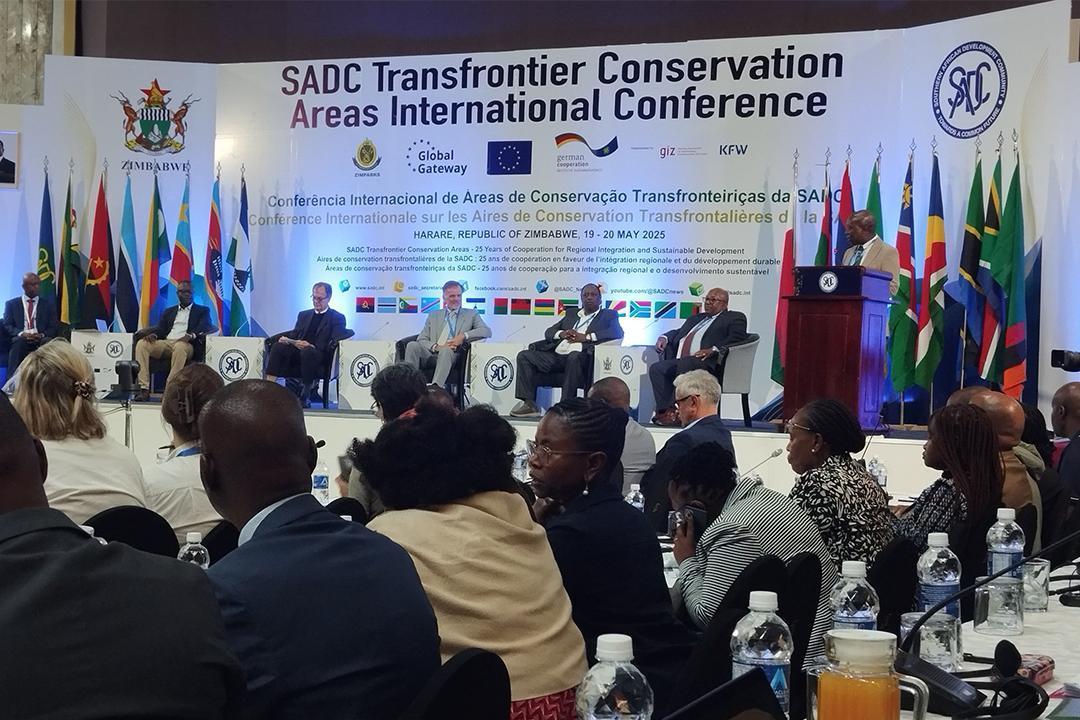Africa-Press – Eswatini. The Zimbabwean capital of Harare turned into a hub of high-level diplomacy and eco-conscious ambition this week as leaders from the Southern African Development Community (SADC) gathered for a milestone conservation summit.
Heads of state, government officials, and environmental experts from across the region assembled on Monday for the official opening of the SADC Transfrontier Conservation Areas (TFCAs) International Conference and Summit.
The five-day gathering, which commemorates 25 years of cross-border conservation, is being held under the theme “Transfrontier Conservation Areas, 25 Years of Cooperation for Regional Integration and Sustainable Development.”
Organised with support from Germany and the European Union, the event has been billed as a platform to reaffirm political will and deepen regional cooperation in biodiversity protection, community development and sustainable tourism.
In a statement, the SADC Secretariat said the region had recorded major strides in wildlife protection, investment in conservation economies and fostering community involvement.
“This summit will further unlock investment opportunities in sustainable wildlife economies and ensure rural communities benefit from conservation efforts,” read the statement.
Eswatini, represented as part of the Lubombo TFCA alongside South Africa and Mozambique, is no stranger to these environmental ambitions. The Lubombo cluster has been praised for its strong institutional coordination, as evidenced by the work of the Eswatini National Trust Commission.
Also adding his voice to the summit’s significance was Professor Cliff Dlamini, Executive Director of the Centre for Coordination of Agricultural Research and Development for Southern Africa (CCARDESA). Speaking from Harare, he emphasised the inclusive nature of the summit, noting that CCARDESA’s mandate spans all SADC member states.
“For us at CCARDESA, all the TFCAs matter because they reflect our regional integration goals,” said Prof Dlamini. He highlighted that CCARDESA had mainstreamed biodiversity conservation and climate resilience into its programmes. “Our board recently approved the Environmental and Social Sustainability Framework to guide these efforts,” he added.
SADC’s 18 TFCAs currently stretch across more than one million square kilometres, linking protected areas in 16 countries. The Kavango-Zambezi (KAZA) TFCA – one of the largest conservation areas in the world – has been spotlighted for innovative approaches like the KAZA UniVisa, which allows seamless travel between Zambia and Zimbabwe for tourists.
Development partners have also stepped up. Germany has invested over 270 million euros in the region’s TFCAs over the past 25 years. The European Union, meanwhile, recently announced its NaturAfrica Global Gateway initiative, which has committed 33 million euros to conservation and community projects.
The summit aligns with global targets, particularly the Global Biodiversity Framework adopted at COP15, which seeks to preserve at least 30% of the world’s land and marine areas by 2030.
The conference, hosted by the Zimbabwean government and ZimParks, has drawn support from international heavyweights including the International Union for Conservation of Nature (IUCN), World Wide Fund for Nature (WWF), and the Peace Parks Foundation.
As the week progresses, stakeholders are expected to sign binding agreements that will shape the next phase of regional conservation, cementing SADC’s legacy as a trailblazer in cross-border environmental collaboration.
For More News And Analysis About Eswatini Follow Africa-Press







